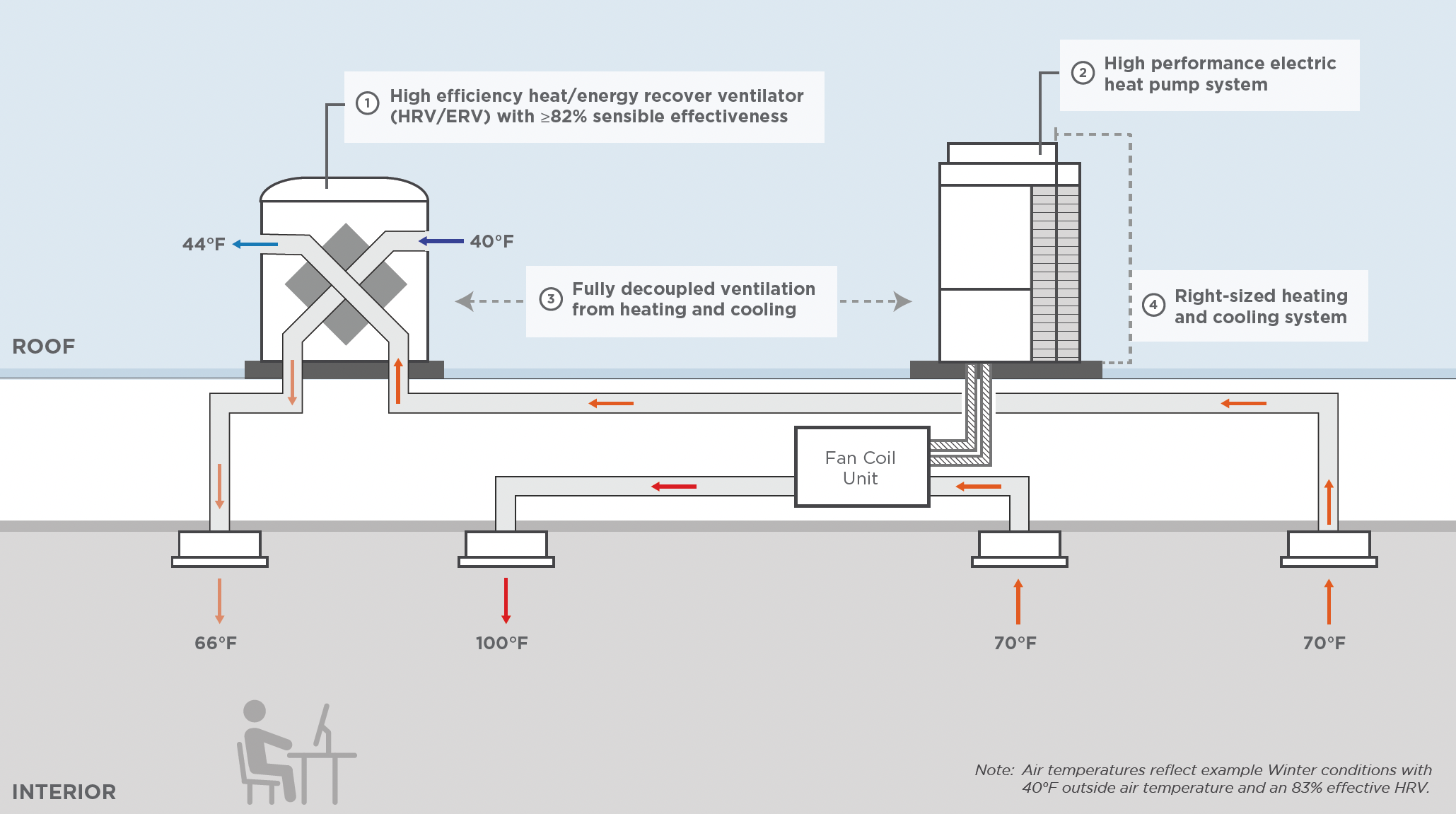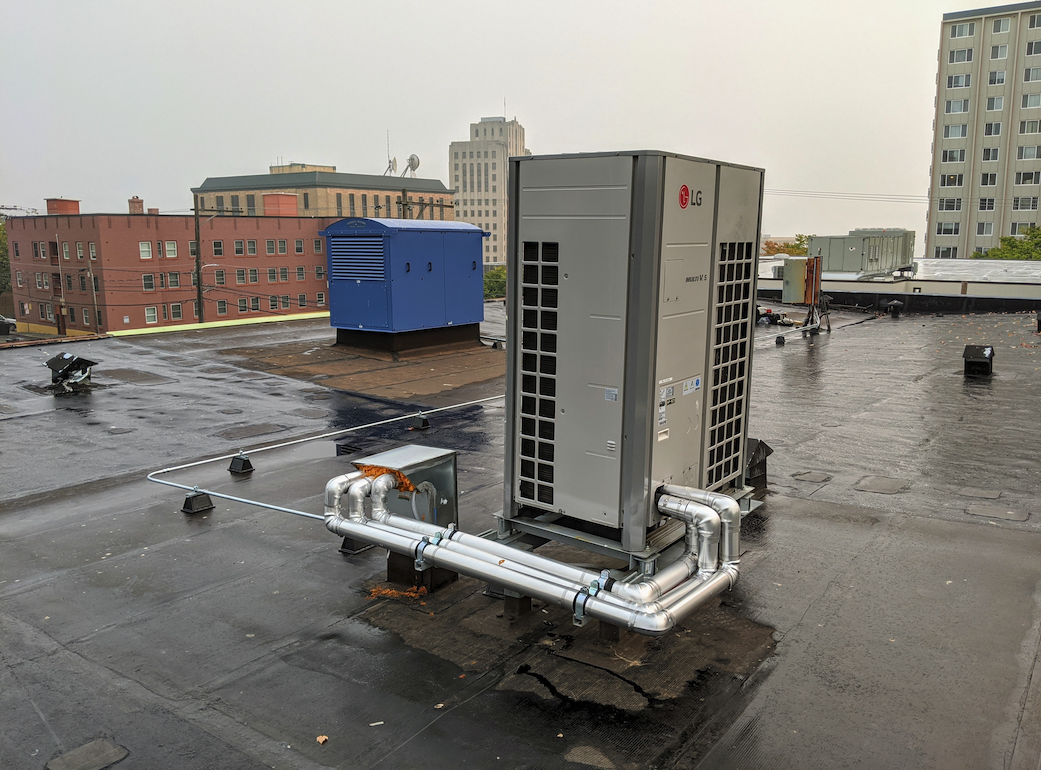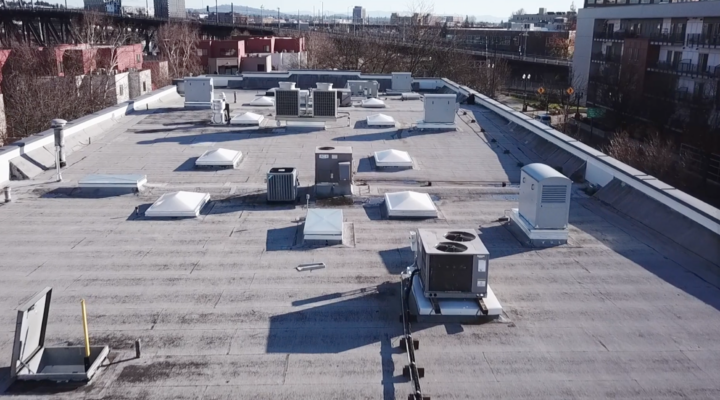Dedicated outside air systems (DOAS) separate heating and cooling from the ventilation system to allow for optimal control of each of these critical building functions. Building on the DOAS concept, a very high efficiency DOAS includes heat recovery ventilation and focuses on increased equipment efficiency and optimized system design. When compared to a code-minimum system upgrade, very high efficiency DOAS can reduce commercial building energy use by an average of 36%, and HVAC energy use by an average of 65%.
For more detailed recommendations and best practices to consider when designing to very high efficiency DOAS standards, view the Equipment and Design Best Practices for Optimal Energy Efficiency.
———
System Benefits
- Can substantially lower energy use in commercial buildings
- Improves indoor air quality by using filtered 100% outside air
- Increases occupant comfort
- Saves roof space through system downsizing and reduced ductwork
- Meets 2017 Washington code requirements for new construction or retrofit HVAC installations, which require DOAS
How it Works

The illustration above demonstrates how the components of this system, installed on the roof of a commercial building, work together to maintain fresh air and consistent temperatures. The HRV pre-heats incoming supply air by recovering heat from the outgoing exhaust air in the winter. In the summer, the HRV pre-cools incoming supply air by rejecting heat to the outgoing exhaust air. This process, eliminates or significantly reduces the need for post-conditioning of the ventilation air. This system approach allows for down-sizing of the heating and cooling system and decreased run-time, resulting in a smaller heating/cooling system and which consumes less energy (lower energy cost).
Northwest Pilot Results

In partnership with local utilities and energy efficiency programs, NEEA conducted a pilot of very high efficiency DOAS conversions in eight small-to-medium commercial buildings to validate energy savings assumptions and gain a better understanding of the design and installation process. Participants of the pilot saw an average 70% reduction of their actual HVAC energy use and a 42% reduction in actual whole-building energy use. Even if these pilot buildings had started with standard code-minimum equipment prior to the conversion, modeling still shows significant average energy savings of 65% for HVAC and 36% for the entire building.
Designer Resources
- Very High Efficiency DOAS Introduction: This introduction—including system benefits and economic analysis—is designed for industry stakeholders, building owners and designers to expand their awareness and understanding of this advanced HVAC approach.
- Pilot Project Summary Report: Conducted in partnership with local utilities, this report details the findings from eight pilot projects which sought to validate the performance and savings of very high efficiency DOAS.
- System Requirements: System requirements, recommendations and compliant systems intended to provide guidance to manufacturers, designers and specifiers regarding the components and design principles of very high efficiency DOAS.
Other Tools, Reports and Research
- Covid-19 Risk Reduction Strategies and HVAC System Energy Impact (Sep 2021)
- Economic Analysis of Heat Recovery Equipment in Commercial Dedicated Outside Air Systems
- Very High Efficiency DOAS vs. WSEC DOAS Requirements
- Literature Review of Non-Energy Benefits Associated with DOAS (Nov 2020)
- Energy Efficiency Analysis of Commercial DX-DOAS and ERV/HRV DOAS (Oct 2021)
